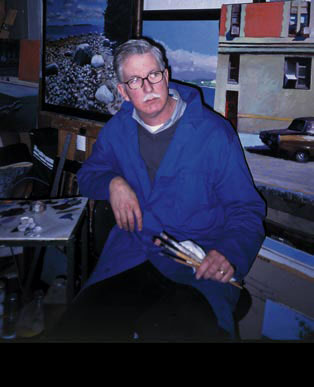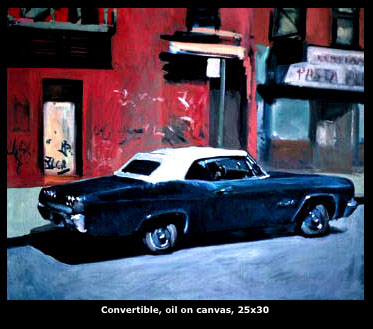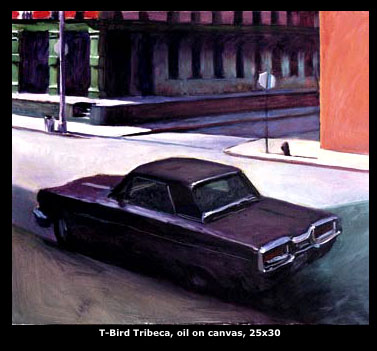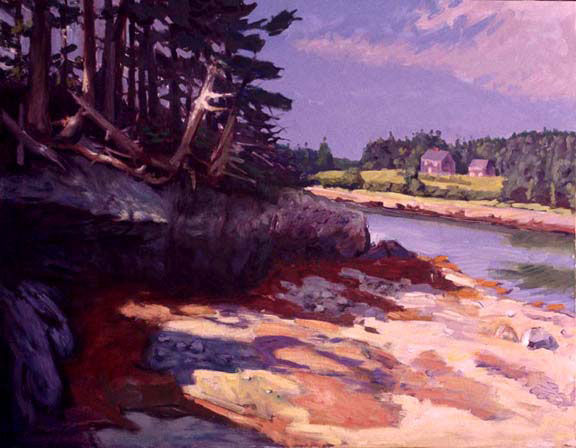|
Robert Seyffert
|
||||||||
|
Born in Bryn Mawr, Pennsylvania, Robert Seyffert hails from a family of prominent American artists. His grandfather, Leopold Seyffert, was a well-known portrait artist and his uncle, Richard Seyffert, painted portraits and landscapes.“I’ve decided in my career that I wasn’t going to do portraits or become a portrait painter, simply because I wanted to do other subjects,” said Seyffert (Legacy 2004). “So I ended up painting more landscapes.” Robert Seyffert studied with Joseph Sheppard at the Maryland Institute of College of Art. “I think the most important thing to me about studying with Joe was this idea of observational painting,” Seyffert said, “and the idea that the paint can make and say something that a viewer can look at and feel impressed by . . . not only the execution, but also the subject that’s chosen to paint. And that’s one of the reasons why I do cityscapes” (Legacy 2004). After earning his Bachelor of Fine Arts degree at the Maryland Institute, Seyffert went on to earn his Master of Fine Arts at the Parsons School of Design. Seyffert is known for both his landscapes and cityscapes. In a profile in American Artist magazine, he explained the appeal of both natural and urban scenes. “Whether it’s a big tree or a 1965 Pontiac,” Seyffert said, “there’s something about the light hitting the subject that excites me, and that’s what I paint. . . . I’m trying to get the sensation created by the thing I’m looking at, and not just copying it” (Howell, 2003). His landscape paintings include scenes from Maryland, California, Nova Scotia, and Brittany. Seyffert’s cityscapes, depicting the streets of New York and Baltimore and featuring vintage automobiles, are frequently compared to the works of Edward Hooper. “I started painting these cars just like Dutch painters would approach a still life, how they’d carefully place fruit on a table to catch the light in a certain way,” Seyffert said (Howell, 2003). “I get the same kind of excitement for light on chrome.” Seyffert has taught drawing and painting at the Art Students League, New York; Washington Studio School, Washington, D.C.; and Baltimore School for the Arts. For the last 15 years, he has been the director of the Alfred and Traffort Klots Residency Program at Rochefort-en-Terre. This international residency program, administered by the Maryland Institute College of Art, gives professional American artists the opportunity to live, work, and exhibit in a Renaissance Chateau in southeast Brittany, France. Among Seyffert’s awards are a first prize from the National Arts Club, a Helena Rubinstein Grant from the Parsons School of Design, a Greenshields Fellowship, and a Yale at Norfolk Summer School Fellowship. Seyffert’s work resides in many institutional and private collections, including the National Portrait Gallery. Seyffert’s work has been shown in numerous solo and group exhibitions, including shows at Loyola College, Baltimore; National Arts Club, New York; Washington Studio School, Washington, D.C.; and Paula MacDonald Gallery, Chester, Nova Scotia. The exhibition, Leopold, Richard, and Robert Seyffert: Three Generations of Artistic Visions, featuring more than 100 paintings by Seyffert, his uncle, and his grandfather, was shown in Baltimore, New York, and Washington, D.C. References Howell, George. 2003. The subject of light. American Artist. 1 February. The Legacy: a tradition lives on. 2004. Produced and directed by Joseph Sheppard. 35 min. Videocassette. |
||||||||
 |
||||||||
 |
||||||||
 |
||||||||
 |
||||||||
|
Henry Island, Maine
|
||||||||